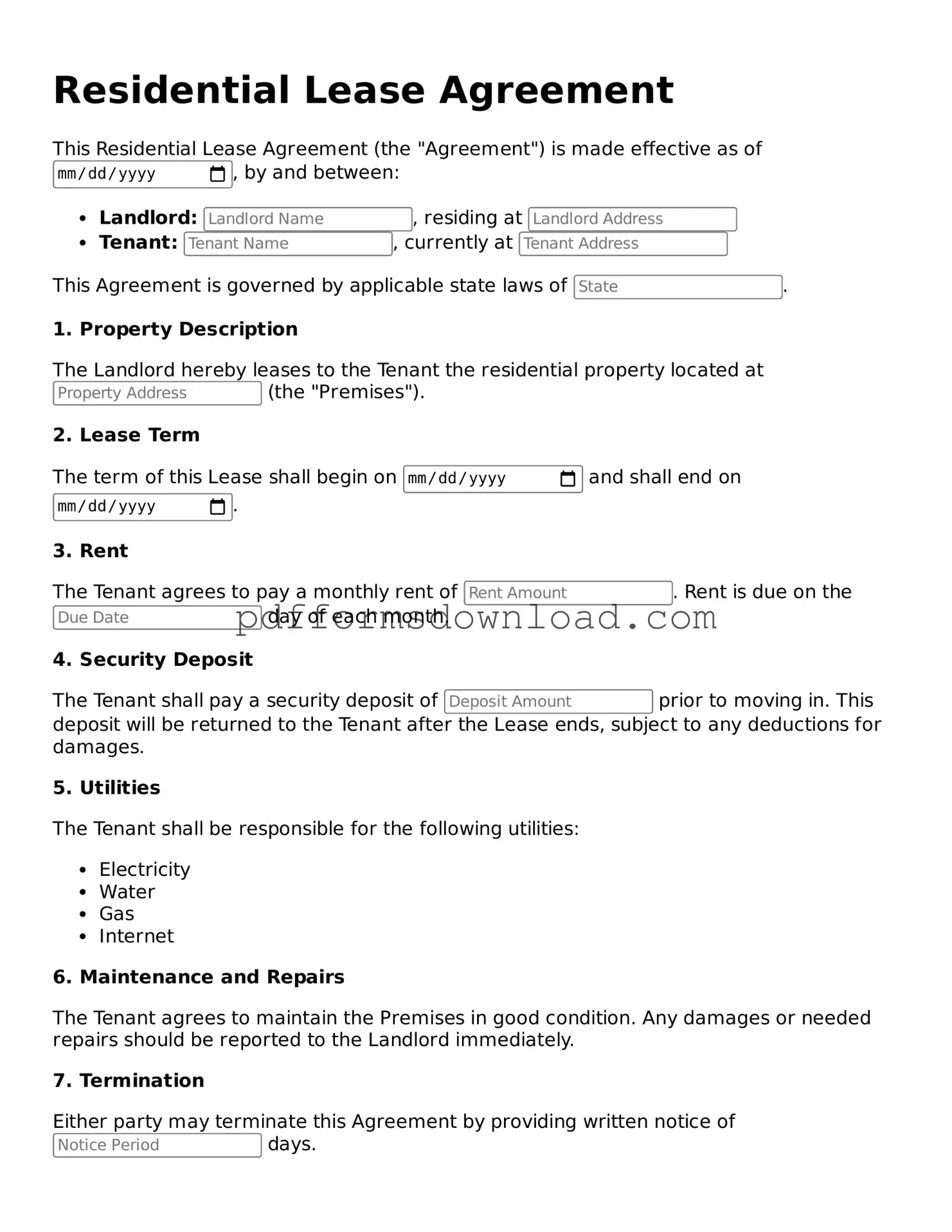What is a Lease Agreement?
A lease agreement is a legally binding contract between a landlord and a tenant. It outlines the terms under which the tenant can occupy the property. Key elements typically include the duration of the lease, rental amount, payment due dates, and responsibilities for maintenance and repairs. Understanding this document is crucial for both parties to ensure a smooth rental experience.
What should be included in a Lease Agreement?
Essential components of a lease agreement include the names of the landlord and tenant, property address, lease term, rent amount, security deposit details, and rules regarding pets or smoking. It should also specify the consequences of breaking the lease, such as penalties or eviction procedures. Clarity in these areas helps prevent disputes down the line.
How long does a Lease Agreement typically last?
Lease agreements can vary in duration. Most commonly, they last for one year, but they can also be month-to-month or extend for multiple years. The length of the lease should be clearly stated in the agreement, and both parties should be aware of the renewal process, if applicable. A well-defined duration provides stability for both landlords and tenants.
Can a Lease Agreement be modified?
Yes, lease agreements can be modified, but both parties must agree to any changes. Modifications should be documented in writing and signed by both the landlord and tenant to ensure they are enforceable. It’s important to approach modifications with caution, as changes can affect the rights and responsibilities of both parties.
What happens if the Lease Agreement is broken?
If either party breaks the lease agreement, there can be serious consequences. For tenants, this may include losing their security deposit or facing legal action for unpaid rent. For landlords, breaking the lease can lead to financial losses or complications in finding new tenants. It’s advisable to understand the specific terms regarding lease termination and the potential repercussions.
Is it necessary to have a Lease Agreement in writing?
While verbal agreements can be legally binding, having a lease agreement in writing is highly recommended. A written document provides clear evidence of the terms agreed upon and protects both parties in case of disputes. It also makes it easier to reference specific terms and conditions, ensuring that everyone is on the same page.
